As an Amazon Associate I earn from qualifying purchases.
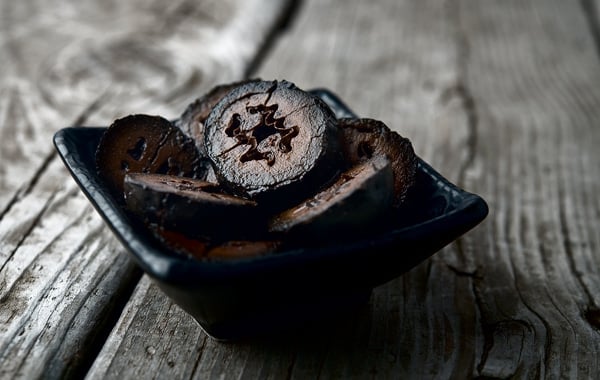
There may be a few foods that are more English than pickled walnuts, but with the possible exception of fish and chips, I can’t think of one. Chances are, however, you’ve never heard of them. I hadn’t, until several years ago when I ordered the meat-and-cheese plate at a local Irish place called deVere’s.
On this place was a black disk. I asked the waitress what on earth it was, and she smiled; she’d had this question before: “It’s a pickled walnut. It’s good with the cheddar.”
I followed her advice and stabbed the disk with my fork, adding a bit of cheddar cheese and a bit of cold roast beef to round things out. Wow. It was a bit like eating solid steak sauce, with a little floral aroma and a zephyr of bitterness that just barely let you notice it.
I ate another disk all by itself: Fairly soft, puckery and strangely floral. And yes, there was definitely a Worcestershire-Heinz 57-A1-thing going on here. How had I never had these before?
Turns out that very, very few people outside of Britain eat them. This should change, which is why I am presenting you with this recipe. And the reason I am posting this now is because you need to get out and get your walnuts now. That’s right, you need green, unripe walnuts to make pickles. And yes, you use the whole thing, hull and all.

I got mine a few weeks ago, after an unsuccessful fishing trip with my friend Joe. We were in the Delta and as we were driving out, I noticed a NorCal black walnut (Juglans hindsii) absolutely laden down with nuts. “Pull over!” Joe, used to this by now, did. I gathered about 150 nuts in less than 15 minutes. It was a bonanza.
I knew I was in business right when I got to the tree, but just to be sure I pulled out my pocketknife and sliced an unripe nut in half. You need to do this, either with a knife or a stout needle or a long nail, because you have to catch the unripe walnuts before the shell forms. Once that shell forms inside the walnut’s hull, you’re too late; the traditional harvest date in England is late June.
The process for pickled walnuts is not hard at all, but it takes more than a week. You need to brine the green walnuts for a good long time before they will be ready to pickle properly. The brine time helps with preservation and removes some of the bitterness in the unripe walnuts. Once brine pickled, they are pretty durable.
Do you need to sun-blacken the walnuts? No, but doing so gives you a nice, uniform look to them. Otherwise they will be olive green in some places, blotchy black in others.
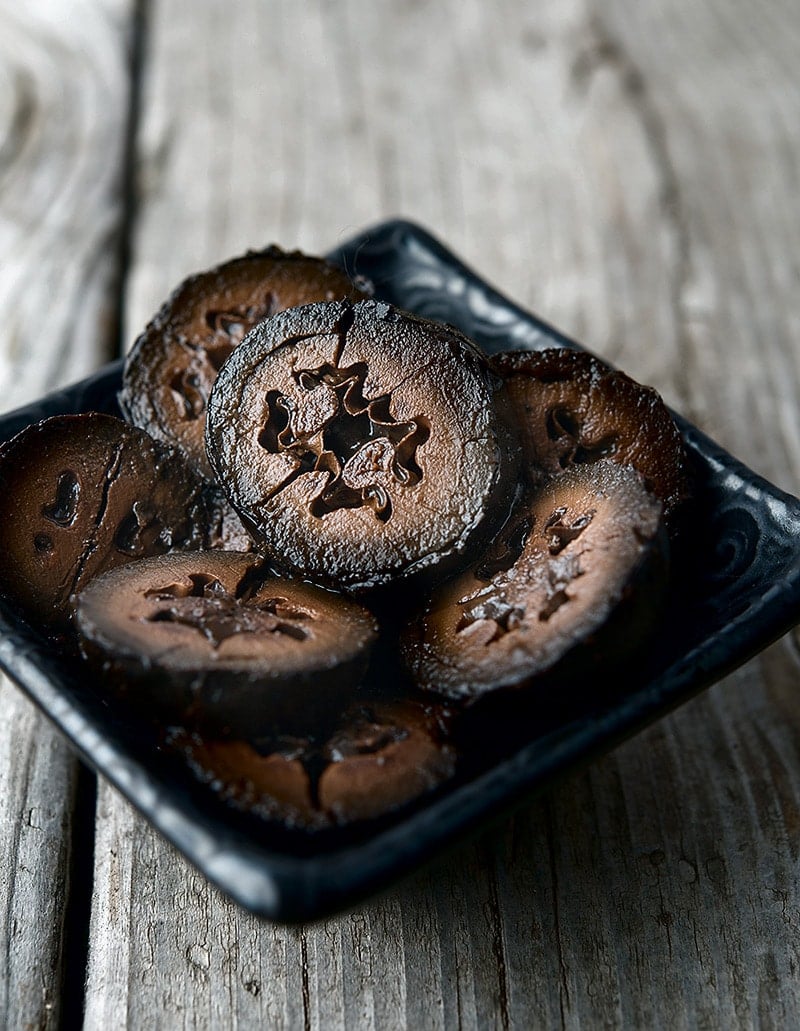
Once you have your pickled walnuts, what do you do with them? Look to the English. Traditionally they are part of a ploughman’s lunch, with other pickles, cheese and cold meats. But I see them a lot tossed into beef or lamb stews (pot pies and pasties, too!) in wintertime, and in summertime I’ve seen them served in cool salads alongside tomatoes, and accompanying shellfish such as scallops or shrimp.
Pickled Walnuts
Ingredients
- About 50 to 60 green, unripe walnuts
- 1/2 cup kosher salt
- 1/2 gallon water
- 2 quarts cider or malt vinegar
- 1 tablespoon cracked black pepper
- 1 tablespoon cracked allspice berries
- 1 ounce ginger, about 1 1/2-inch pieces, smashed
- 1 cup brown sugar
Instructions
- Dissolve the salt in the water to make a brine. Put on some rubber gloves if you have them, because walnut juice will stain your hands for weeks -- and it won't come off. Trust me on this one. Properly gloved, stab each walnut with a fork in several places; this helps the brine penetrate. Submerge the walnuts in the brine and let them ferment for 8 days at room temperature.
- Remove the walnuts and put them on a baking sheet and leave them outside in the sun for a day, until they turn uniformly black. You can do this step without gloves if you want.
- Pack the walnuts into quart jars. Bring the remaining ingredients to a boil and pour over the walnuts. Leave very little headspace in the jars. Seal and keep in a cool place, either the fridge or a basement -- you just want them to rest below 70°F -- for at least a month before you eat them. Kept this way they will last a year.
Notes
Nutrition
Nutrition information is automatically calculated, so should only be used as an approximation.

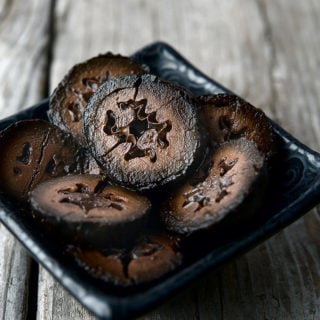


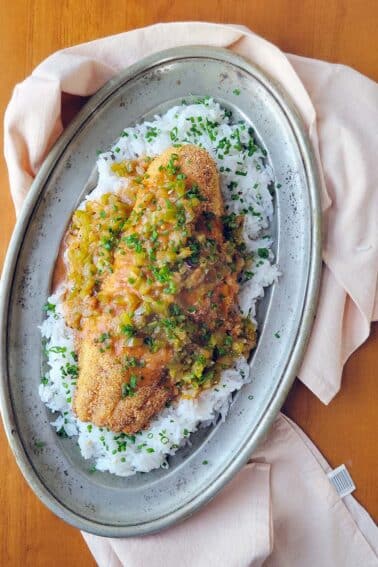
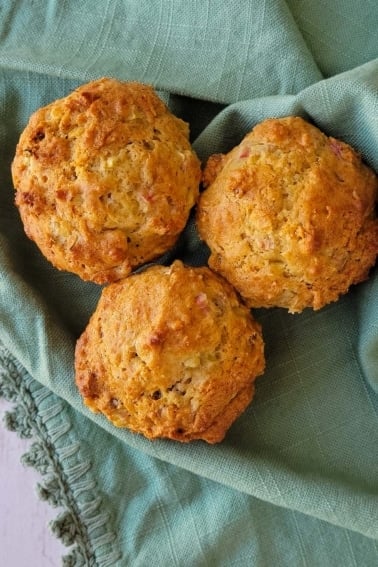
Remaining ingredients? What is that and where is it kept while drying the main ingredient, the Walnut?
hi. in Iran , we make walnut pickles . but we only use the main eatable part of the nut not the whole thing . it’s actually very mild and you can have it with any kind of foods . but i never have seen this one.
Can hickory nuts be used as well?
Ben: No. They have a very different shell structure.
Hi Hank I like your recipe but my family and extended family have been doing these for years I’m 59 and my mother is 86 and the family recipe came from my grandmother on my mothers side of the family the only difference is we don’t sun dry them and our problem in New Zealand is that its Christmas time when you have to do them and the smaller walnuts are better. When you give them to people they have no idea what they are until you explain to them that it is a walnut. But they are always good to pull out at a dinner party and freak people out.
Thanks Hank. Have just set my second seasons walnuts out in the sun for colouring, after successfully following your recipe last year. They are definitely an undiscovered little gem and much easier to preserve than most people think.
Hi Hank, great article and recipe, thanks! I have a walnut tree here in Launceston, Tasmania, and this year I think I’ll have a go myself. Similar story…went to a winery and had some on a cheese board. They were delicious. Our summer is already half way through, but the walnuts have been slow to grow past that inch x inch size. I’m going to slice one as you suggest to see if I need to wait longer, or just jump in. Could it be that there are different varieties of walnut tree and their nuts are different size? Cheers, Phil
My mother used to make a beef and pickled walnut casserole when I was young (back in the 80s) which was my favourite meal. I’ve just picked a heap of young walnuts and about to try your method. Cheers Mate.
Can this be done with pecans?
Shaylyn: No. They have a very different shell structure.
I asked this question previously but I don’t think it made it thru.
Is there any reason to think this might not work with pecans?
Thanks
Rooster: It won’t work with pecans. Their shell structure is very different. Sorry!
My recipe is from the 1950s. It suggests allspice, cloves and root ginger in the vinegar.
1 imperial pint water
1/4 oz allspice/pimento
1/4 oz cloves
1/4 oz Stick cinnamon
1/8 oz root ginger
Thinly-peeled rind 9f half a lemon
1 bay leaf
I make my own vinegar which seems to give the walnuts a really good flavour. I might use a few cloves to make it more interesting but the amount suggested seems overwhelming rather than tantalising. I will add black pepper too. The last lot I made was outstanding but I can’t remember which recipeI used!
If your using raw vinegar with the mother culture and don’t want to kill it with boiling is that okay or would it be best to boil some with spices and then when cool add raw vinegar?
sounds delicious…
do I boilthe rest of the ingredients in thebrine or do I use clean water?
thanks
Pieter
Do I cut the walnuts before bottling them?
Babs: I do not cut them.
Your recipe for pickled Walnuts is amazing. Will be doing these every year from now on. Thoroughly enjoyed watching them turn black in the sun. Fascinating. Thank you
While these may be used in England currently, I believe they were something the English carried back from their exploring.
https://georgianrecipes.net/2013/09/10/kaklis-muraba-pickled-walnuts/ I see Lebanese recipes, Egyptian recipes, etc. So Middle Eastern might be the origin. I made two recipes. One I used brown sugar and the other white sugar. I think the brown sugar over took the flavors of the spices and balsamic vinegar too much. Next year I will try 3:1 white with brown sugar.
These are truly addictive!
Hank, I just finished canning my first batch and I have a couple of questions for you. Do you use distilled cider vinegar or raw? I made one batch with each, I’m interested to see if there’s much difference. Do you use a water bath to get the jars to seal, or do you use another canning method?
Dave: I use distilled cider vinegar, and I water bath can them for 15 minutes.
Exactly as described. Like eating steak sauce, with just enough tang to be exciting without being oppressive. A wonderful recipe that has been added to my collection.
On another forager page the author reported that Eastern Black Walnuts don’t seem to set up the same way as the variety common in California. He said the texture was grainy, dry and unpleasant. I suspect the walnuts I have access to in Mid to Northern MN are probably the Eastern variety. Do you know anything about this texture issue? I can link the page if you would like to address it directly.
Thank you for one more item to make for future meat boards. I actually was coming here hoping you had some recipes for spiced or otherwise toasted walnuts. I’m looking to concoct some trail mixes that would include some ground venison jerky bits, maybe hard cheese, definitely dried fruit (blueberries or Juneberries), puffed wild rice and nuts. For some reason I’m having a hard time deciding what flavors would go well in a mix with these items. Hope you don’t mind the tangent.
Thanks for your helpful guide!!! I’ll try and pickle these.
Hello,
Just to be clear, the walnuts should be picked green from the tree, leaving the husk on them when brining? Thanks!
Roger: Correct.
Hi Hank,
I just tried my walnuts pickled in June… they have a slightly fibrous and tough texture, namely at the rind/outer edge. The flavor is awesome, though. I was careful to pick them young and they look just like yours. Any thoughts?
Thanks!
Hillary